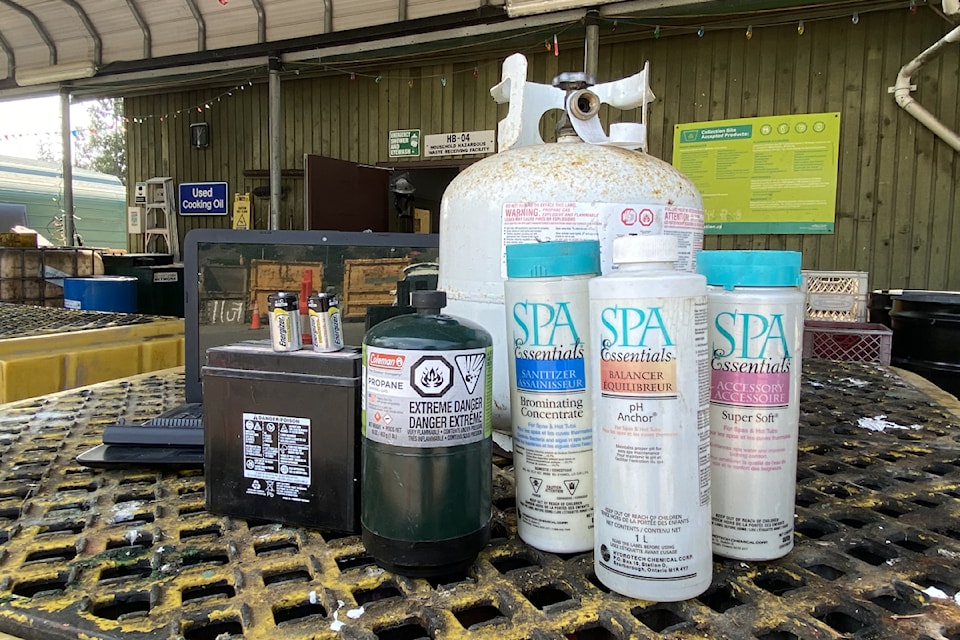As summer winds down, it’s time to enjoy those final barbecues, pool parties and garden projects. But did you know that some of the items you’ve used this summer might become dangerous if not disposed of properly? From propane tanks and lithium-ion batteries to pool chemicals and garden pesticides, all household hazardous waste (HHW) needs special handling to prevent dangerous fires and ensure safety.
In particular, it’s essential to note that HHW cannot be disposed of in your home recycling or garbage.
Here’s how you can make a difference and wrap up your summer safely:
1. Identify and manage hazardous materials – Household products marked as flammable, corrosive, explosive or poisonous are classified as HHW. This includes common items like batteries, paints, varnishes and cleaners.
2. Find a safe disposal location – HHW can be safely disposed of at the Hartland Depot for free, or you can search for the item on myrecyclopedia.ca to find a list of alternate drop-off locations. To see what you return safely and easily to Hartland Depot, here's a list of Accepted HHW Products.
3. Package and label correctly – Keep HHW in its original container. If the original container is damaged, put it in a secondary container (of a similar material) and label it clearly. For unlabelled and unknown items, be sure to drop them off at the yellow table at Hartland Depot and speak with a staff member for assistance before you leave.
4. Transport with care – When transporting HHW, ensure it's in an upright position in the trunk of a car or bed of a truck. If travelling from a Gulf Island, review BC Ferries’ procedure on transporting dangerous goods.
5. Take action – make a positive change – Be part of the solution to help prevent tragedies by ensuring waste workers are not exposed to the risk of explosions or fires. Do not put hazardous materials in your recycling bins, your garbage cans, or down the drain/toilet.
If you can, try and avoid using HHW products from the start. For example, many environmentally friendly cleaning products exist, or you can try making your own using recipes in the Clean Green Cookbook.
To learn more about HHW visit www.crd.bc.ca/hhw.
